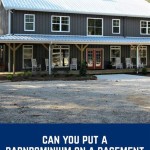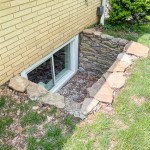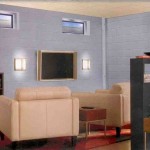Sound Insulation In Basement Ceiling
Sound insulation in a basement ceiling is essential for creating a peaceful and comfortable living space. Whether you're converting your basement into a home theater, guest room, or simply want to reduce noise from upstairs, there are several effective methods to achieve soundproofing.
1. Mass-Loaded Vinyl (MLV)
MLV is a thin, flexible material that adds significant mass to the ceiling, effectively blocking sound waves. It's typically installed between the ceiling joists and the drywall or suspended below the joists. MLV is particularly effective at reducing low-frequency noise, such as footsteps and bass.
2. Acoustic Ceiling Tiles
Acoustic ceiling tiles are specially designed to absorb sound and reduce reverberation. They come in various patterns and textures, allowing you to match your ceiling's aesthetics while improving acoustics. These tiles are typically installed in a suspended ceiling system.
3. Green Glue Noiseproofing Compound
Green Glue is a viscoelastic compound that's applied between layers of drywall or plywood. It acts as a damping material, converting sound vibrations into heat, effectively reducing noise transmission.
4. Fiberglass Insulation
Fiberglass insulation is commonly used in basement ceilings for thermal insulation, but it also provides some soundproofing. When installed in multiple layers, fiberglass insulation can absorb sound waves and reduce noise levels.
5. Soundproofing Curtains
Soundproofing curtains can be hung over windows and doors to block noise from entering or escaping the basement. These curtains are typically made from heavy fabrics, such as velvet or canvas, and may incorporate additional sound-absorbing materials.
6. Ceiling Decoupling
Ceiling decoupling involves installing a resilient channel or sound clips between the ceiling joists and the drywall. This creates an air gap that prevents sound waves from vibrating the ceiling and transmitting noise.
7. Rigid Insulation
Rigid insulation, such as foam board or mineral wool, can be installed on the basement ceiling to block sound waves. These materials are dense and prevent sound from penetrating through them.
When soundproofing a basement ceiling, it's important to address both sound transmission and reverberation. Using a combination of these methods can significantly reduce noise levels and create a more peaceful and comfortable living space.

Soundproofing Ceilings How To Soundproof A Ceiling

Soundproofing Basement Ceiling And Framing Walls Under It Doityourself Com Community Forums

Nova Basement Remodeling Soundproofing In

How To Soundproof A Basement Ceiling

Soundproofing A Ceiling

How To Soundproof Ceilings Between Floors

How To Soundproof A Basement Ceiling Walls Floors

How To Sound Proof Basement Ceiling Bees Build Ltd

Basement Ceiling Soundproofing 4 Diy Ways To Do It Cheap Youtube

7 Ways To Soundproof A Ceiling That Really Work
See Also








